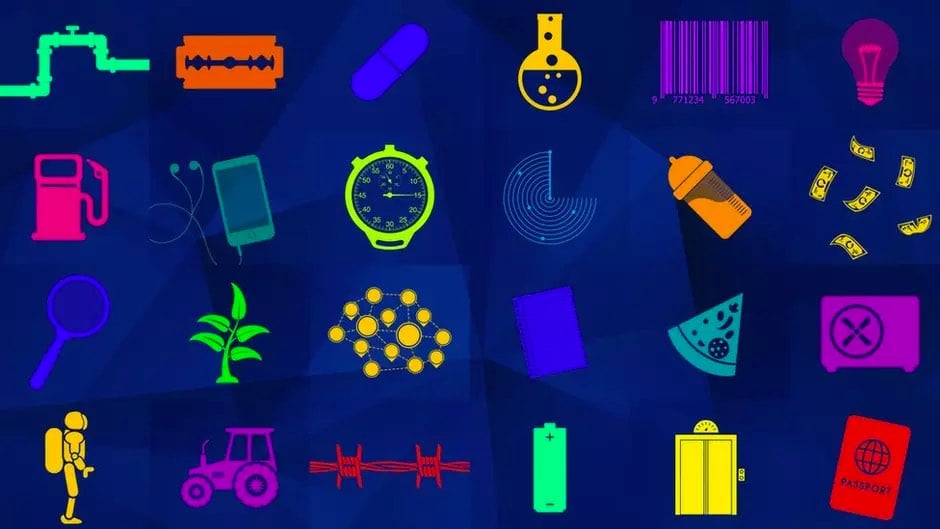For the FT, Tim Harford writes about things that could have been invented far sooner than they actually were.
Consider the bicycle. It was not produced in even the most primitive form until the early 1800s, and a practical version with chain drive was not widespread until the 1880s — just in time to compete with the motor car.
Anton Howes, author of Arts and Minds, points to the flying shuttle, invented in 1733. “It radically increased the productivity of weaving,” he writes. “It involved no new materials…and required no special skill or science.” The craft that it transformed has been around long enough to be mentioned in the Old Testament.
Steven Johnson, in his book Extra Life, suggests that evidence-based medicine is an idea behind its time. The idea of running experiments is centuries old, but the first properly randomised controlled trial in medicine took place in 1948. It could easily have been routine before da Vinci’s time, but instead clinical trials lagged far behind anaesthetic, antibiotics, antiseptic, pasteurisation and vaccines.
Barbed wire is one of the most important inventions of the past 150 years. It tamed the Wild West and solidified the concept of land ownership in America. Tim Harford, author of Fifty Inventions That Shaped the Modern Economy, writes:
After Europeans arrived and pushed west, the cowboys roamed free, herding cattle over the boundless plains.
But settlers needed fences, not least to keep those free-roaming cattle from trampling their crops. And there wasn’t a lot of wood — certainly none to spare for fencing in mile after mile of what was often called “The American Desert”.
Farmers tried growing thorn-bush hedges, but they were slow-growing and inflexible. Smooth wire fences didn’t work either — the cattle simply pushed through them.
Barbed wire changed what the Homestead Act could not.
Until it was developed, the prairie was an unbounded space, more like an ocean than a stretch of arable land.
Private ownership of land wasn’t common because it wasn’t feasible.
With demand came fierce competition; there were dozens of different types of barbed wire:

Just two years after Joseph Glidden patented his design for barbed wire in 1874, another of the 19th century’s great inventions burst onto the scene in the form of Alexander Graham Bell’s telephone. The two world-changing technologies would combine in a surprising way in the western United States. Because of the expense of running dedicated telephone services over long distances, some farmers opted to run their telecommunications over the hundreds of thousands of miles of barbed wire criss-crossing the land.
It was in building the network connecting homestead to homestead that the farmers’ ingenuity came to the fore. Instead of erecting new poles and wires, many either ran phone wires along the top of wooden fence posts or used the barbed wire itself to carry signals. The latter hardly worked as well as insulated copper wire, but with the lines already in place, installation and operating costs could be kept to a minimum. By one estimate, service ran a mere $3 to $18 a year, far less than the regional phone companies charged, and labor for maintaining the network was supplied by volunteers.
So cool. I’m reading A Mind at Play right now. It’s a biography of Claude Shannon, “the architect of the information age”. As a boy, Shannon wired the half-mile stretch of barbed wire fence between his family’s farm and a friend’s house:
He charged it himself: he hooked up dry-cell batteries at each end, and spliced spare wire into any gaps to run the current unbroken. Insulation was anything at hand: leather straps, glass bottlenecks, corncobs, inner-tube pieces. Keypads at each end — one at his house on North Center Street, the other at his friend’s house half a mile away — made it a private barbed-wire telegraph. Even insulated, it is apt to be silenced for months in the ice and snow that accumulate on it, at the knuckle of Michigan middle finger. But when the fence thaws and Claude patches the wire, and the current runs again from house to house, he can speak again at lightspeed and, best of all, in code.
In the 1920s, when Claude was a boy, some three million farmers talked through networks like these, wherever the phone company found it unprofitable to build. It was America’s folk grid. Better networks than Claude’s carried voices along the fences, and kitchens and general stores doubled at switchboards.
(via mr)
Update: See also the Devil’s Rope episode of 99% Invisible. (thx, dave)

Tim Harford, aka The Undercover Economist, is coming out with a new book called Fifty Inventions That Shaped the Modern Economy.
New ideas and inventions have woven, tangled or sliced right through the invisible economic web that surrounds us every day. From the bar code to double-entry bookkeeping, covering ideas as solid as concrete or as intangible as the limited liability company, this book not only shows us how new ideas come about, it also shows us their unintended consequences — for example, the gramophone introducing radically unequal pay in the music industry, or how the fridge shaped the politics of developing countries across the globe.
It’s based on his BBC podcast 50 Things That Made the Modern Economy.
Fun fact that I just discovered: Harford and I share the same birthday, both date and year.







Stay Connected